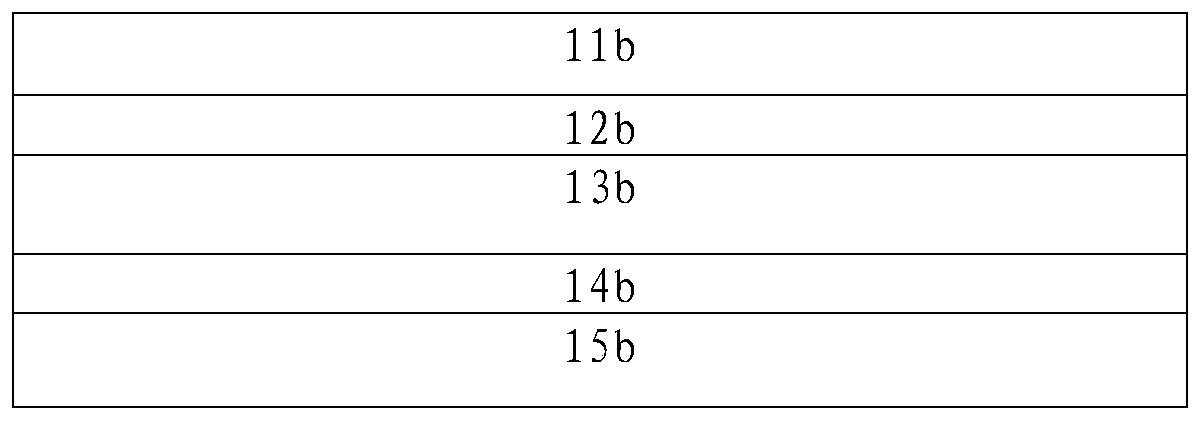Method for preparing laminated structure of photovoltaic module, laminated structure, photovoltaic module
A laminated structure and photovoltaic module technology, applied in photovoltaic power generation, coatings, electrical components, etc., can solve the problems of heavy weight, large environmental pollution, and non-compliance with green environmental protection standards, so as to ensure flatness, reduce energy consumption, Good appearance and convenient effect
- Summary
- Abstract
- Description
- Claims
- Application Information
AI Technical Summary
Problems solved by technology
Method used
Image
Examples
Embodiment 1
[0057] See figure 2 As shown, a laminated structure of a photovoltaic module, the laminated structure includes a first encapsulation layer 11a, a solar cell string 13a and a second encapsulation layer 14a, wherein,
[0058] Preferably, in order to further enhance weather resistance, the laminated structure includes a fluoroplastic film layer, and the fluoroplastic film layer is located above the first encapsulation layer. Preferably, in order to provide toughness protection for the solar cell strings, the laminated structure includes an encapsulation film layer, and the encapsulation film layer can be separately arranged between the first encapsulation layer and the solar cell strings or between the solar cell strings and the second encapsulation layer, It can also be arranged between the first encapsulation layer and the solar battery string and between the solar battery string and the second encapsulation layer at the same time. Further preferably, the encapsulation film l...
Embodiment 2
[0085] See image 3 As shown, in this embodiment 2, the laminated structure includes a fluoroplastic film layer 11b, a first encapsulation layer 12b, a first EVA layer 13b, a solar cell string 14b and a second encapsulation layer 15b, and the fluoroplastic film layer 11b is located at the second On the top of an encapsulation layer 12b, other technical solutions of this embodiment 2 are the same as those of the above-mentioned embodiment 1.
Embodiment 3
[0087] See Figure 4 As shown, in this embodiment 3, the laminated structure includes a first encapsulation layer 11c, a first EVA layer 12c, a solar cell string 13c, a second encapsulation layer 14c and a backplane layer 15c, and the backplane layer 15c is located in the second encapsulation layer Below the layer 14c, the rest of the technical solution of the third embodiment is the same as that of the first embodiment above.
PUM
| Property | Measurement | Unit |
|---|---|---|
| glass transition temperature | aaaaa | aaaaa |
| hydroxyl value | aaaaa | aaaaa |
| acid value | aaaaa | aaaaa |
Abstract
Description
Claims
Application Information
 Login to View More
Login to View More - R&D
- Intellectual Property
- Life Sciences
- Materials
- Tech Scout
- Unparalleled Data Quality
- Higher Quality Content
- 60% Fewer Hallucinations
Browse by: Latest US Patents, China's latest patents, Technical Efficacy Thesaurus, Application Domain, Technology Topic, Popular Technical Reports.
© 2025 PatSnap. All rights reserved.Legal|Privacy policy|Modern Slavery Act Transparency Statement|Sitemap|About US| Contact US: help@patsnap.com



